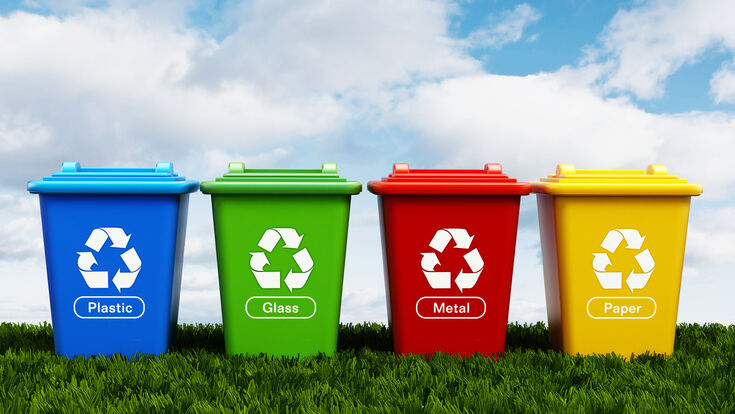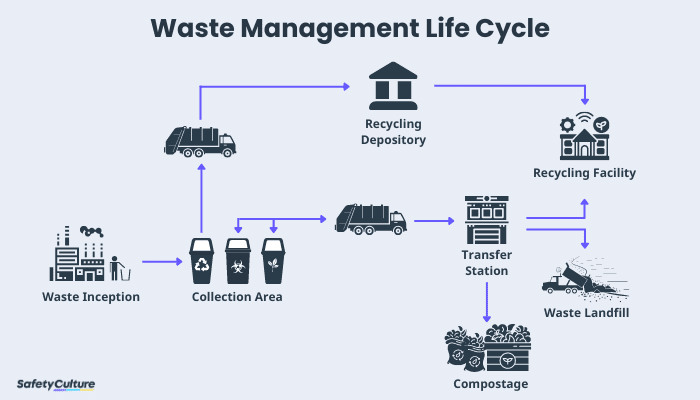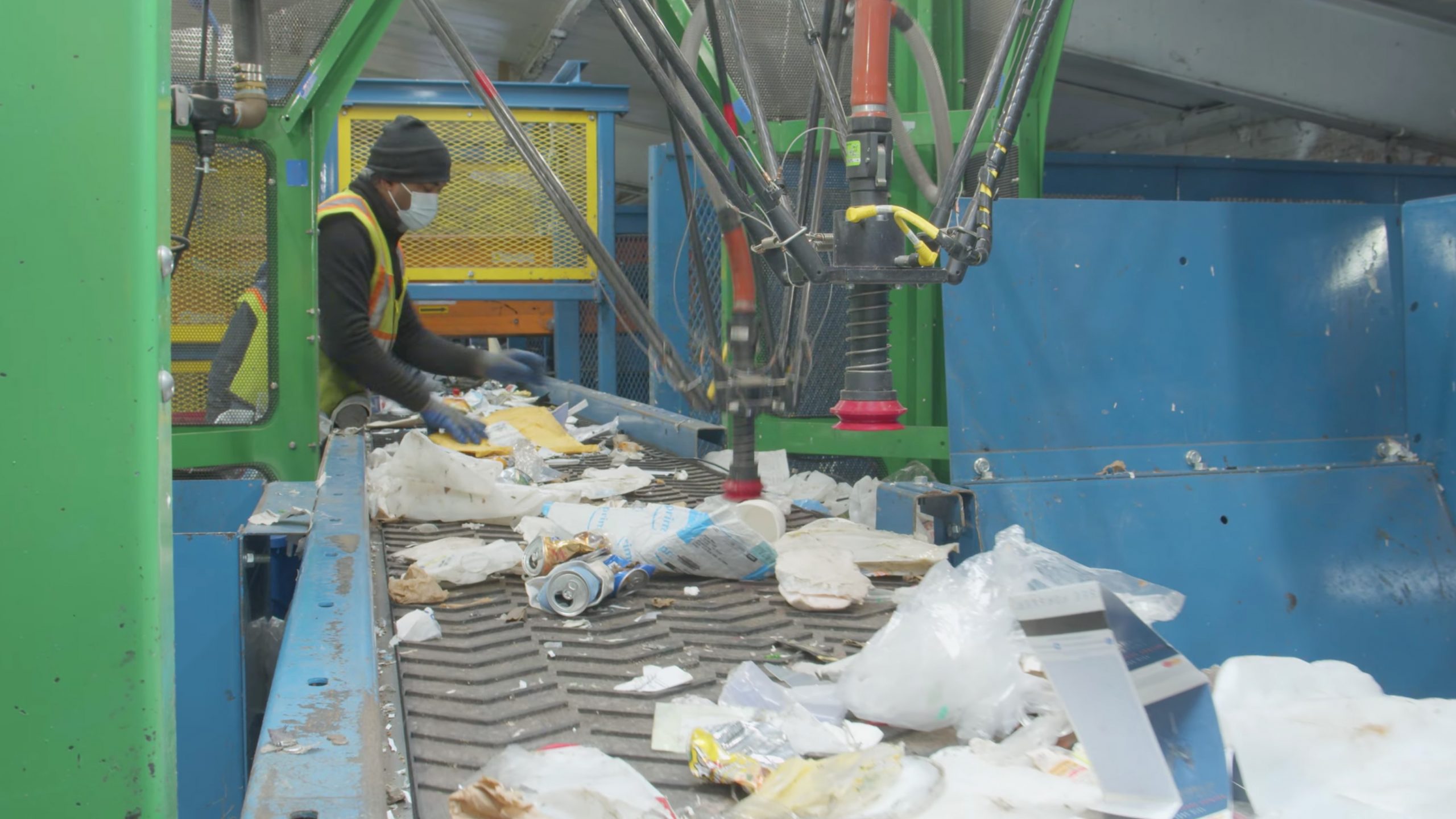The Impact of Recycling Lives Services on Communities and the Atmosphere
The Impact of Recycling Lives Services on Communities and the Atmosphere
Blog Article
Checking Out Different Types of Waste in Modern Waste Management Solution
The contemporary landscape of waste monitoring involves browsing a complex selection of waste types, each calling for specialized handling and disposal approaches to minimize ecological impacts. Metropolitan strong waste, hazardous waste, electronic waste, and natural waste each existing distinctive difficulties and opportunities for source recuperation. Ingenious services such as wise waste containers and waste-to-energy innovations are emerging as critical tools in boosting performance and sustainability. Understanding these waste kinds is necessary for fostering public recognition and motivating active participation in lasting methods. What strategies can properly resolve these diverse sorts of waste while promoting a circular economic climate?
Municipal Solid Waste
Metropolitan solid waste, commonly described as home garbage or trash, incorporates a variety of thrown out materials produced by property, business, and institutional resources within a district. This waste stream commonly consists of items such as product packaging, food scraps, backyard trimmings, paper, plastics, textiles, and disposed of home goods. The management of community strong waste is an important part of urban preparation and public health, requiring efficient collection, transport, and disposal systems.
Reliable waste administration systems are designed to minimize ecological effect while optimizing source recovery. Composting natural waste, such as food scraps and lawn trimmings, not just decreases land fill use but additionally produces important soil changes.
Municipalities must likewise attend to the logistical and economic obstacles connected with waste administration. Carrying out pay-as-you-throw systems, boosting public understanding, and spending in modern technology can dramatically enhance waste diversion rates. By integrating these techniques, districts can promote lasting communities, decrease greenhouse gas emissions, and conserve natural deposits.
Contaminated Materials

Efficient hazardous waste administration involves several critical actions: recognition, treatment, disposal, and segregation. Identification involves the classification of waste based on its dangerous homes. Partition ensures that unsafe materials are kept individually from non-hazardous waste to avoid cross-contamination. Treatment approaches, such as chemical neutralization, incineration, and stabilization, are utilized to minimize the toxicity, quantity, or mobility of the waste. Disposal options, consisting of secure landfills and below ground storage space, are selected to make certain long-lasting containment.
Regulative frameworks, such as the Source Conservation and Recovery Act (RCRA) in the United States, offer standards and criteria for dangerous waste management. Adherence to these guidelines, paired with innovations in waste treatment innovations, is essential in alleviating the risks connected with contaminated materials.
Digital Waste
Electronic waste, commonly described as e-waste, stands for a swiftly growing difficulty in waste management systems internationally. This sort of waste incorporates thrown out electronic gadgets and tools such as smartphones, computer systems, televisions, and other digital devices. The quick pace of technical advancement, coupled with decreasing product life-spans and consumer need for the current devices, has tremendously increased the volume of e-waste produced yearly.
E-waste is particularly problematic because of its complex composition, often including harmful compounds like lead, mercury, and cadmium, which position considerable ecological and health threats otherwise appropriately managed. Conversely, e-waste additionally includes important materials such as gold, silver, and copper, which can be recouped and recycled. The double nature of e-waste-- both valuable and harmful-- necessitates customized handling, reusing, and disposal procedures.
Efficient e-waste management entails rigid governing frameworks, robust collection systems, and advanced recycling modern technologies. Public recognition and participation are essential, as inappropriate disposal practices, such as unlawful discarding and informal recycling, exacerbate ecological contamination and carcinogen. Enhancing e-waste monitoring methods is vital for reducing ecological effect and recouping important resources in a progressively electronic world.

Organic Waste
Organic waste, consisting of kitchen area scraps, backyard trimmings, and agricultural deposits, stands for a substantial part of the global waste stream. This type of waste is biodegradable, meaning it can be broken down by microbes right into less complex organic substances. Despite its potential for natural decay, incorrect monitoring of natural waste can lead to damaging environmental effects, including the exhaust of greenhouse gases such as methane, which add to climate modification.
Effective management look at this now of natural waste is vital for lessening these environmental influences (recycling lives services). Composting is an extensively embraced approach, changing natural waste right into nutrient-rich compost that can enhance soil health and wellness and farming efficiency. Furthermore, anaerobic food digestion is an emerging modern technology that converts natural waste into biogas, a renewable resource resource, and digestate, which can be utilized as plant food
Municipalities and waste management entities should implement durable organic waste collection and treatment programs to optimize the advantages of these procedures. Public education and learning campaigns can also play a pivotal duty in encouraging homes and organizations to different organic waste from various other sorts of waste. By focusing on the monitoring of natural waste, societies can minimize landfill use, lower greenhouse gas emissions, and create important byproducts for farming usage.

Cutting-edge Waste Monitoring
In the world of waste monitoring, ingenious methods are changing how societies handle their refuse, aiming for sustainability and performance. One noticeable innovation is the execution of smart waste bins furnished with sensors that check fill levels and optimize collection courses.
One more remarkable development is the adoption of waste-to-energy (WtE) technologies. By converting non-recyclable waste right into functional energy via processes such as incineration and anaerobic food digestion, WtE minimizes garbage dump problem and gives a renewable resource source. Additionally, advancements in chemical reusing permit the malfunction of complicated plastics into their initial monomers, enabling the development of new, top notch plastic items.
In addition, the round economic situation design is getting grip, stressing the design of items and systems that focus on reusability and resource effectiveness. This all natural approach motivates sectors to decrease waste generation from the outset. Through these ingenious techniques, modern waste management systems are not only attending to the instant difficulties of garbage disposal helpful resources however likewise leading the way for a more lasting future.
Conclusion
An extensive understanding of metropolitan strong waste, hazardous waste, digital waste, and organic waste, paired with the execution of cutting-edge waste management options, is vital for reducing environmental effects. Incorporating modern technologies such as wise waste bins and waste-to-energy systems can improve performance and sustainability. Effective waste administration methods not only foster resource recovery yet also advertise public recognition and engagement, eventually adding to the development of a round economy.
The contemporary landscape of waste management entails browsing an intricate array of waste types, each calling for specialized handling and disposal techniques to mitigate environmental impacts. Community strong waste, dangerous waste, electronic waste, and organic waste each existing unique challenges and chances for resource recuperation.Electronic waste, frequently referred to as e-waste, represents a quickly expanding obstacle in waste management systems globally. With these innovative methods, modern waste monitoring systems are not just attending to the instant challenges of waste disposal but additionally paving the way for an extra lasting future.
A detailed understanding of local solid pop over here waste, dangerous waste, digital waste, and organic waste, combined with the application of innovative waste monitoring services, is important for alleviating ecological impacts. (recycling lives services)
Report this page